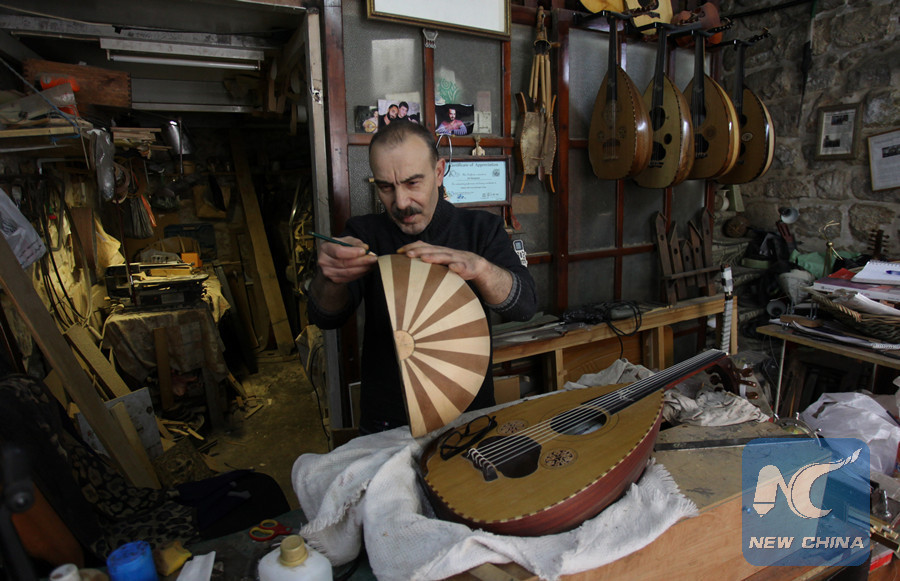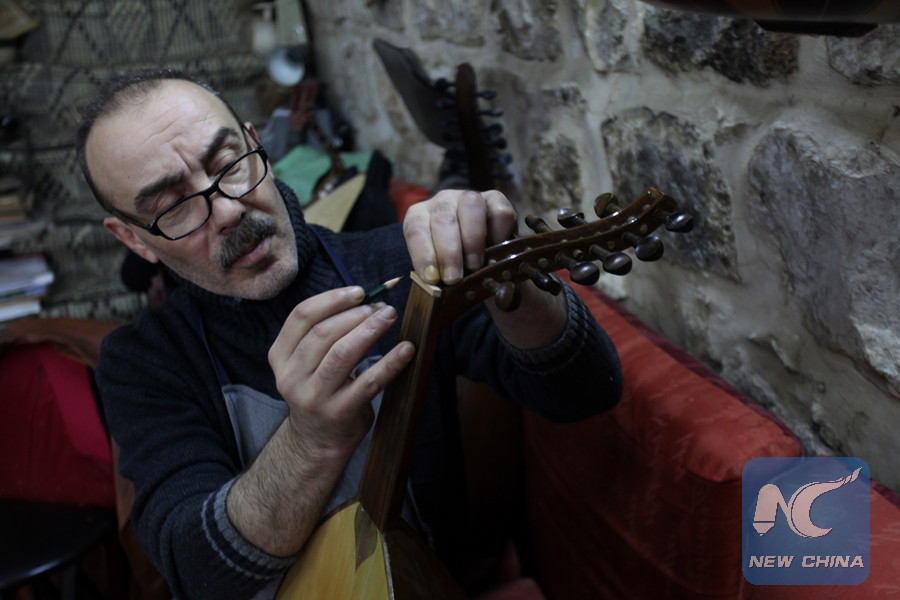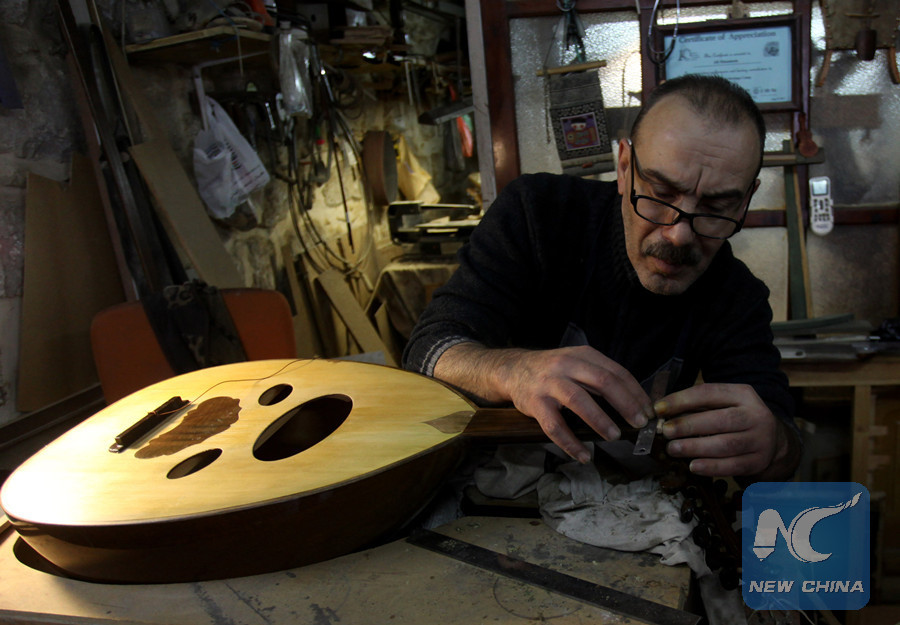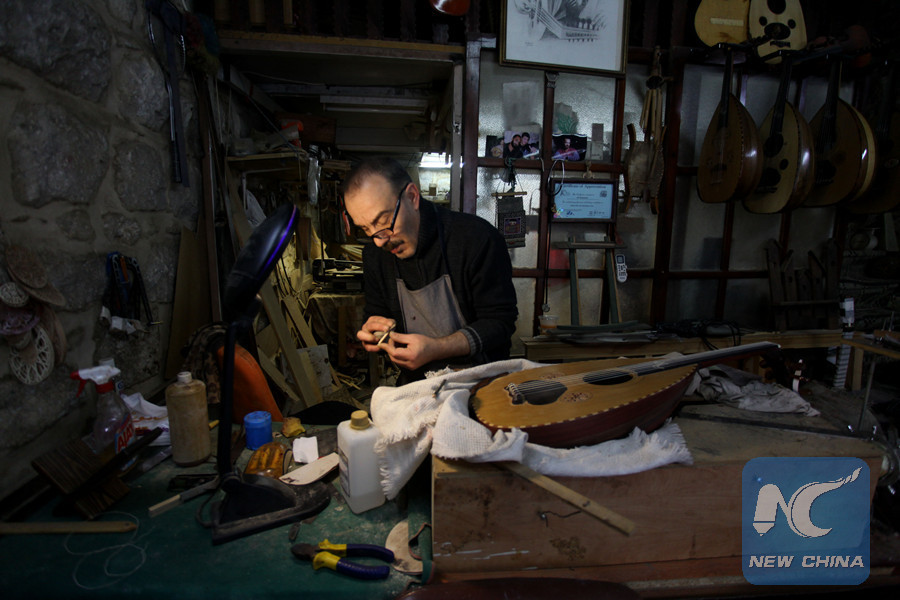
Palestinian Ali Hasneen, 57, makes traditional Oud by hand inside his shop in the West Bank City of Nablus, on Nov. 26, 2018. (Xinhua/Nidal Eshtayeh)
NABLUS, West Bank, Dec. 3 (Xinhua) -- "To mend the Oud, you only need to know how to play its magic. To make the Oud, however, you need to put your soul into it," said Ali Hasneen, who abandoned his career as a nurse to mend and make traditional Oud by hand.
Oud is considered to be the oldest known string instrument, which is approximately 65 cm long and 35 cm wide with an oval shaped music box and an arm of extended chords.
Making this instrument requires patience and accuracy, which is considered to be a rare handicraft nowadays.

Palestinian Ali Hasneen, 57, makes traditional Oud by hand inside his shop in the West Bank City of Nablus, on Nov. 26, 2018. (Xinhua/Nidal Eshtayeh)
Oud is commonly made of spruce or cedar wood which allow the instrument to play a pure sound.
"I learned to play the Oud at home as a child. My father was a musician and he taught me. So I developed a sense to understand the possible problem with the Oud and how to fix it," said Hasneen.
"Gradually, I started to borrow my friend's Ouds and fix them until I opened a small workshop at home," he added.

Palestinian Ali Hasneen, 57, makes traditional Oud by hand inside his shop in the West Bank City of Nablus, on Nov. 26, 2018. (Xinhua/Nidal Eshtayeh)
Hasneen explained that he mended the first Oud in 1991. He recalled that the broken Oud was important to him because he had bought it as a child with money he saved over a long period of time.
Hasneen named his shop after Ziryab, a distinguished Arab musician who was a lead singer and Oud player.
The shop is located in a nearly 200-year-old building in an old town of Nablus.
In order to be patient and accurate, Hasneen works at night. He starts the mission with cutting, bending and clearing the wood and then puts the pieces together.
He has to test the quality of the voice without interruption.
"The facet of the Oud is the most important part," said Hasneen, which "gives about 70 percent of the quality voice."

Palestinian Ali Hasneen, 57, makes traditional Oud by hand inside his shop in the West Bank City of Nablus, on Nov. 26, 2018. (Xinhua/Nidal Eshtayeh)
According to Hasneen, there are schools teaching how to play the Oud in Iraq, Syria and Egypt.
Hasneen said that he travelled to Cairo, Baghdad and Damascus over the years with the goal to meet Oud makers and learn from them.
But "no one gives away their secret. This is usually a craft handed down from father to son," he added.
"We know that the Oud is 5,000-year-old. This is proved through a manuscript in northern Syria of Akkadian era that shows a woman holding an instrument similar to the Oud," said Hasneen.

